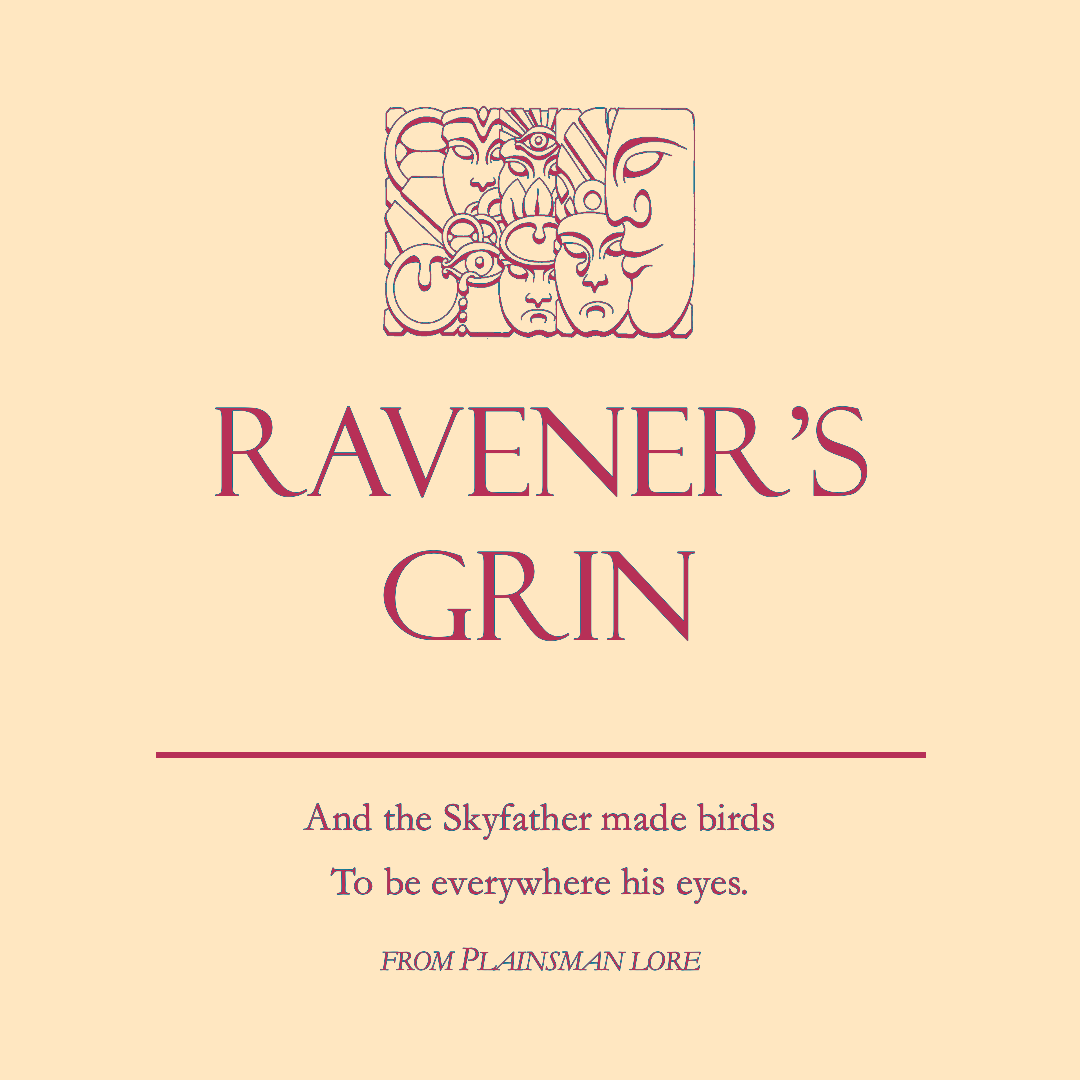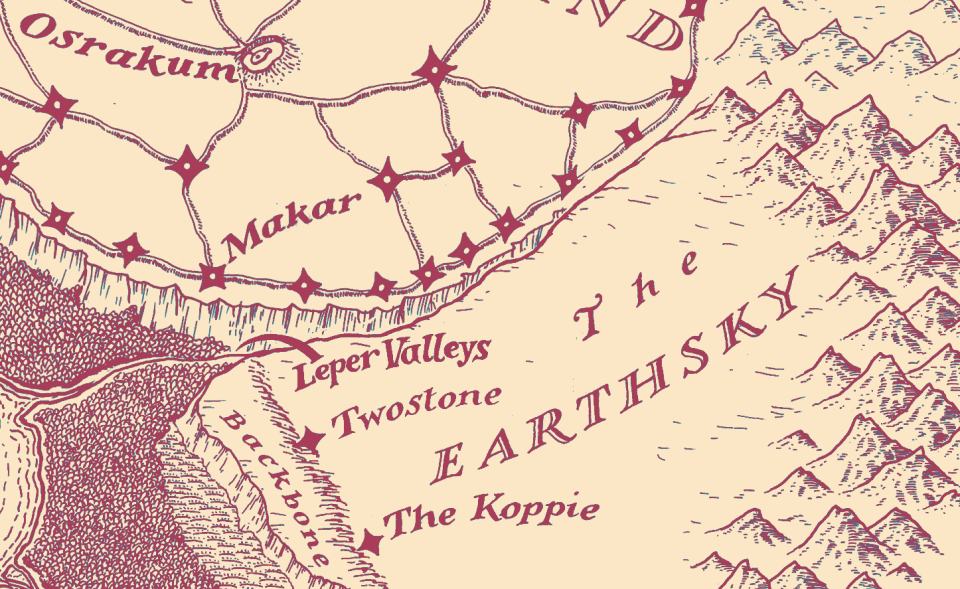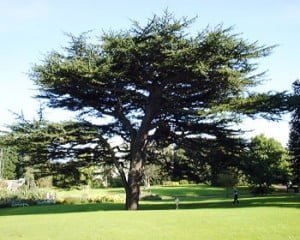Chapter: Ravener’s Grin
Information relevant to the 9th chapter of The Standing Dead
the koppies of the Plainsmen
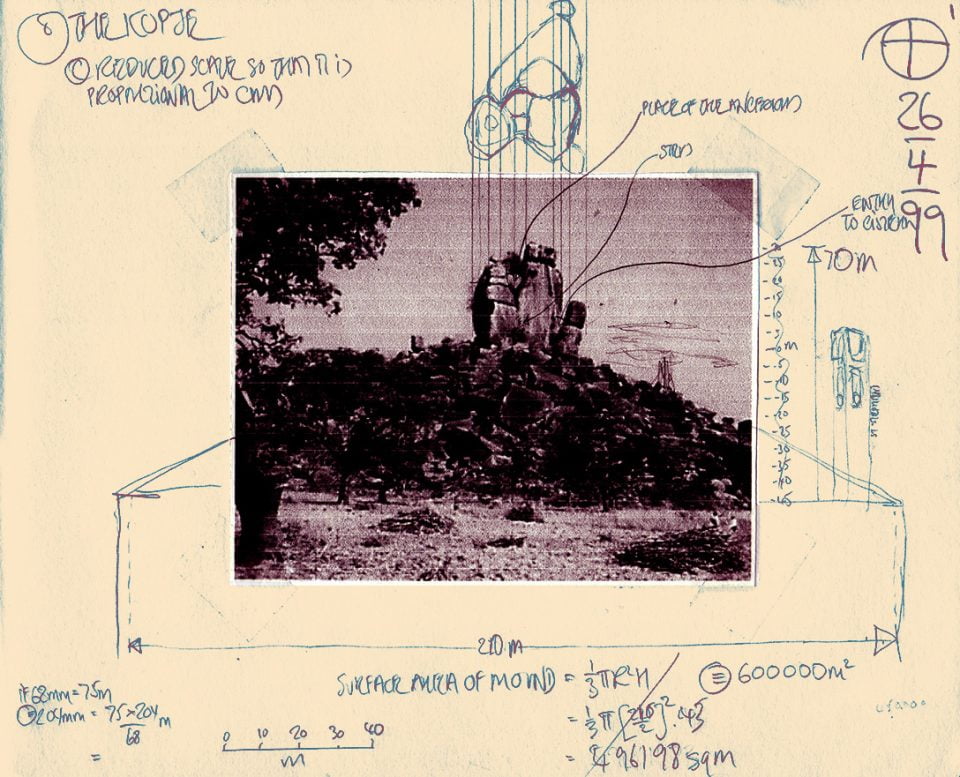
A “koppie” is a small volcanic extrusion emerging out of a plain and is the name given to such features that occur throughout Southern Africa. The Earthsky is scattered with them. It is on and around these natural ‘islands’, in the midst of the endless fernland of the plain, that the Plainsmen make their homes. As the location of so much of The Standing Dead, I had to take care in exploring and understanding the topography of koppies: the Koppie of the Ochre in particular
The sketch shows my original conception of a koppie. If I remember correctly, the photograph is of a koppie in Nigeria; it became the model for the Koppie. Notice how I have imagined how the cluster of rocks might appear from above. It is into the cleft between two of them that I inserted the Ancestor House of the Ochre. Note also the scribble on the right, showing one of the cedars or mother trees, each with its associated hearth
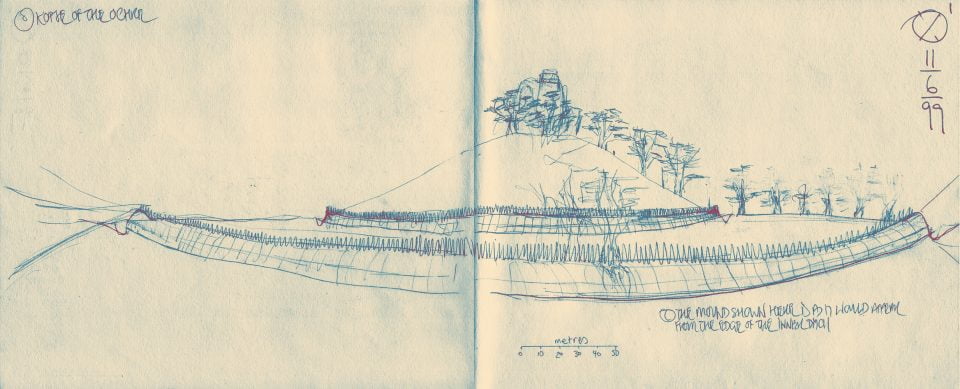
The second sketch, though of the Koppie of the Ochre, gives a good idea of what any Plainsman koppie would look like. Note the circular, concentric ditches, crossed over by earthbridges. In this sketch, I have only drawn in a few cedars—the hill would be densely covered in them
Mother Trees
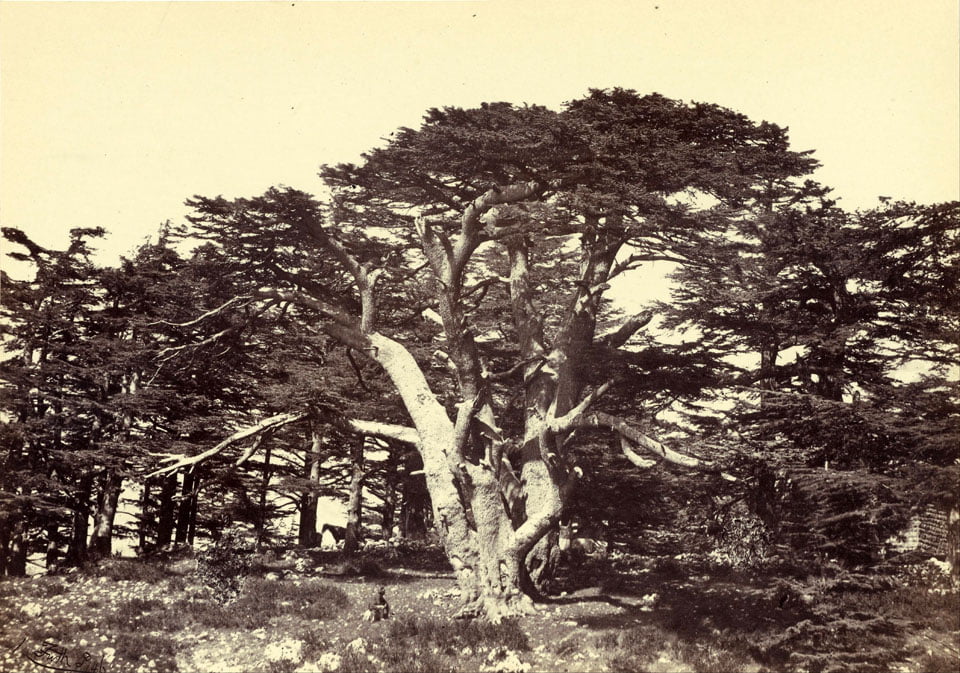
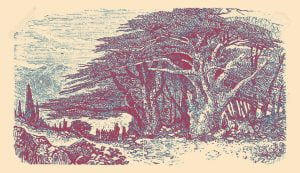
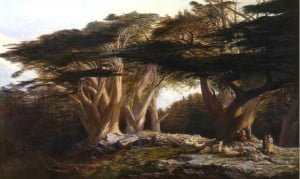
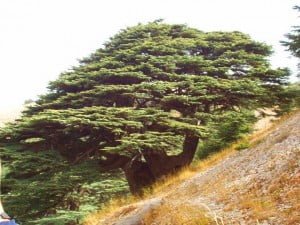
Mother Trees are a species of cedar. I took the second photograph, one summer, of a beautiful example located in the Edinburgh Royal Botanic Gardens. I spent much time lying under it, looking up through its branches at the sky. Tragically, it was damaged in a storm and had to be cut down. The specimen shown is a small one. On the slopes of Lebanon, famed since ancient time for these trees, some exist that are hundreds of years old and that reach a height of 18m (54ft), an expanse of 32m (100ft), and whose trunks are 4m (12ft) in diameter
